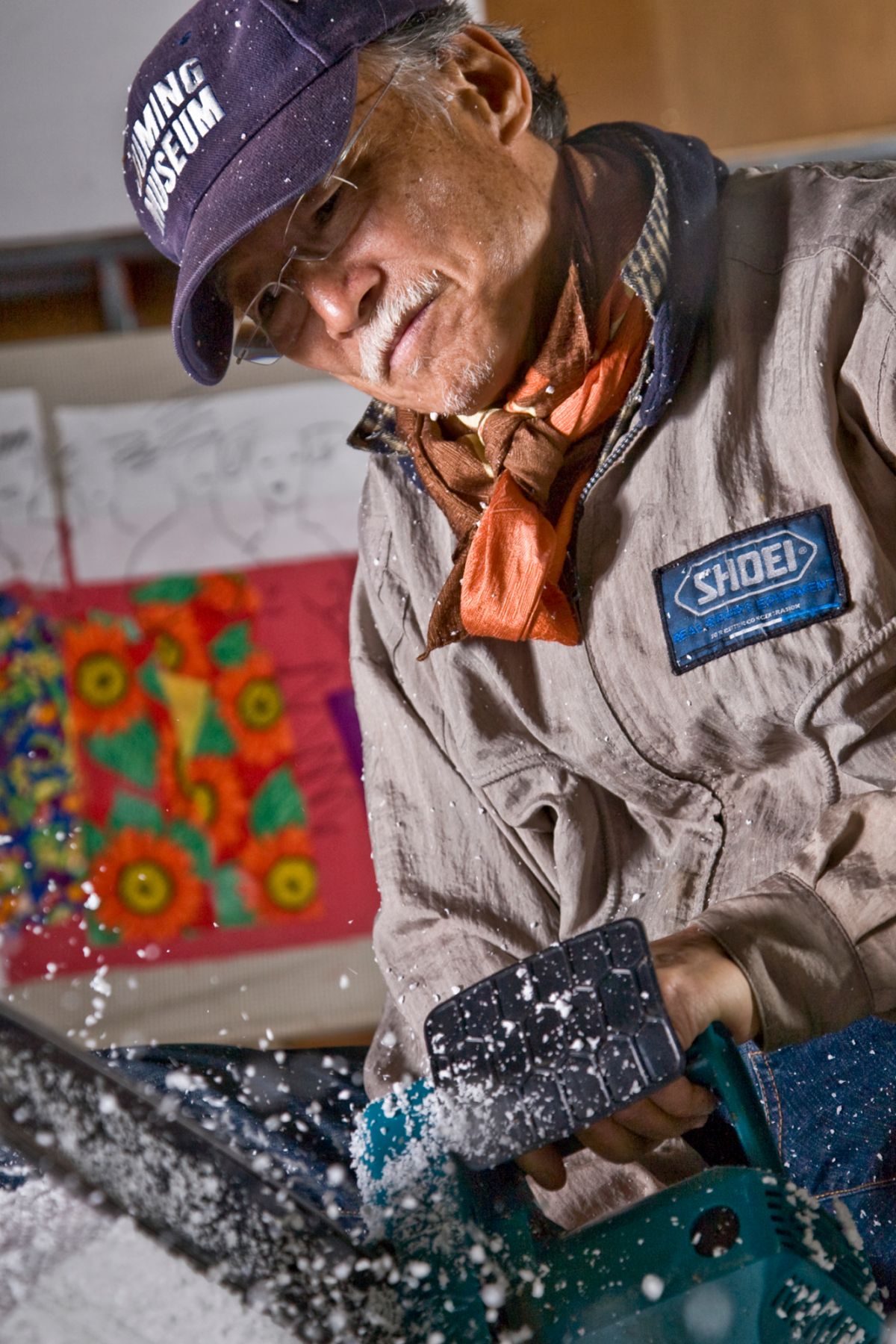News
Ju Ming, 1938–2023


Taiwanese sculptor Ju Ming, aged 85, died in his Taipei home on April 22. Taiwan media outlets reported that the artist—who was struggling with chronic ailments—took his own life.
Born as Ju Chuan-tai in Taiwan’s Miaoli County in 1938 during the Japanese occupation, the artist started working in wood at the young age of 15. He apprenticed under esteemed artisanal woodcarver and painter Lee Chin-chuan, developing his skills in a variety of mediums including bronze, ceramics, and stainless steel. After learning the trade, Ju opened a studio and took on apprentices of his own. Although he received several awards in the established Taiwan Provincial Art Exhibition in the mid-1960s, he sought to push himself further and became a disciple of renowned Taiwanese sculptor Yuyu Yang in 1968. Yang praised Ju for his sensitivity to material, in particular the “assured gentleness and humility” with which he executed his forms. Under Yang’s tutelage, Ju incorporated more modernist techniques and picked up taichi, a traditional martial art that would shape his artistic career in indelible ways.
Ju attained local fame in the 1970s with his Taichi sculpture series. His minimalistic, boxy bronze-and-steel sculptures captured the body’s vitality while breaking free of material constraints. His works were featured in a solo exhibition at the National Museum of History in Taipei in 1976 and he was named one of the Ten Outstanding Youths of 1976. During the 1980s and ’90s, he began exhibiting abroad. His Kung Fu sculptures were featured at the Pao Sui Loong Galleries at the Hong Kong Arts Centre in 1980, before a larger retrospective in November 1982. He showed four times in New York at Max Hutchinson Gallery (1981–85) and Phyllis Kind Gallery (1989). The Taipei Fine Arts Museum held a retrospective in 1987 and The Southbank Center, London, showcased his work in 1991. One of his large Taichi sculptures was displayed in the Place Vendome in Paris from December 1997 through January 1998.
His other well-known Living World series, which he started in 1980, was modelled after his observations of a westernized society and were painted bright colors to heighten their resemblance to people’s fashion outfits. Many of his sculptures are still exhibited in public spaces around the world today, including The Gentlemen Statues (2015) in Chicago’s AMA Plaza; Living World series (2014) outside Capitagreen in the heart of Singapore’s Central Business District; and Single Whip Dip (1986) and Right Heel Kick (1991) sculptures from his Taichi series outside Hong Kong’s ever-bustling Exchange Square.
Ju Ming was awarded numerous local and international sculpture accolades between 1966 and 2007, including Taiwan’s foremost artistic prize, the Executive Yuan Cultural Award, in 2004. Most notably in 2007, Ju Ming was conferred the prestigious 18th Fukuoka Asian Culture Prize. He was the second Taiwanese artist to receive this award.
Today, most of Ju’s works are housed at the eponymous Ju Ming Museum located in Jinshan District in northern New Taipei City. Built to resemble an art park nestled within neighboring mountains and seas, the museum provides a vast outdoors space for Ju Ming’s monumental works to interact with the natural landscape. The public museum was fully funded and designed by the artist himself and upholds his vision to “[plant] the seeds of art into the soil of Taiwan.” His works also belong to the collections of the Taipei Fine Arts Museum, the Taiwan National Taiwan Museum of Fine Arts in Taichung, and the Kaohsiung Museum of Fine Arts.
Ju is being mourned by those both within and outside the art circles worldwide. Chen Chien-jen, former Taiwanese vice president, expressed sorrow at the loss of one of Taiwan’s most respected artists. Johnson Chang Tsong-zung, founder of Hong Kong’s Hanart TZ gallery and co-founder of the Asia Art Archive, remembered Ju Ming as a “patient and resolute man [who] stayed on course to the end” and the time when they “together saw the rise of recognition for Chinese art, and shared the joy of moving exhibitions to diverse corners of the world.”
* If you or someone you know is thinking about suicide and seeking emotional support, please contact your local crisis hotline.







